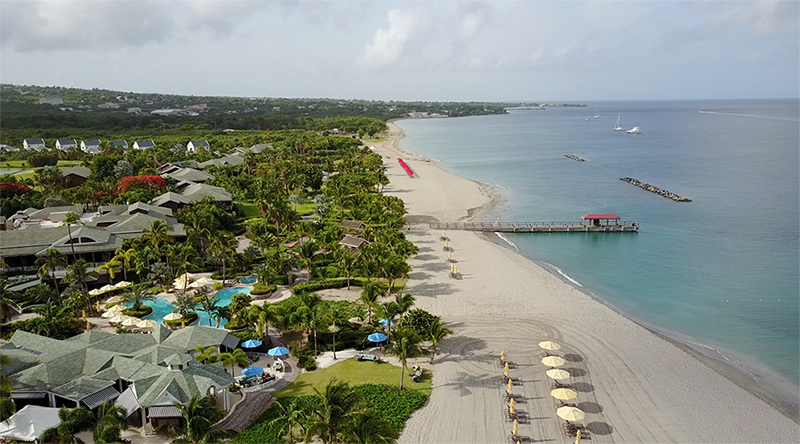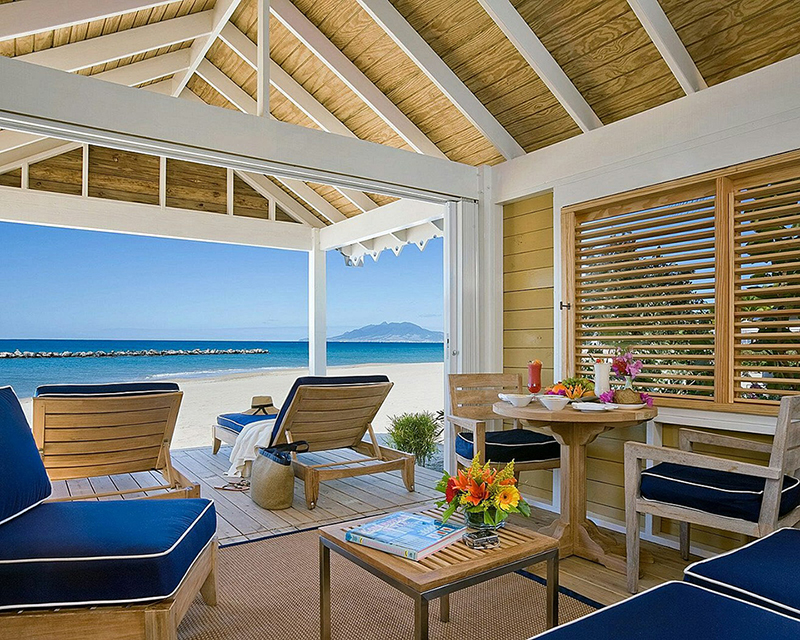
Don’t be shy about ordering more than one Spicy Island Turtle at Four Seasons Resort Nevis.
The luscious cocktail from the Forbes Travel Guide Four-Star hotel’s master mixologist Kendie Williams hits all of the right notes — it’s herbaceous because of the rosemary-infused Naked Turtle white rum, fruity from the mango puree and lemon juice, and fiery from the Nevis-made Llewellyn’s mango pepper sauce and jerk spice rim.
The Nevis hotel (which reopened on September 29, mostly unscathed by recent hurricanes) is the only place in the Caribbean to serve Naked Turtle, a smooth, slightly sweet rum with hints of molasses, coconut and vanilla (only 14 U.S. states carry it). But an even better reason to keep the Spicy Island Turtles coming is that you can help save a sea turtle’s life.
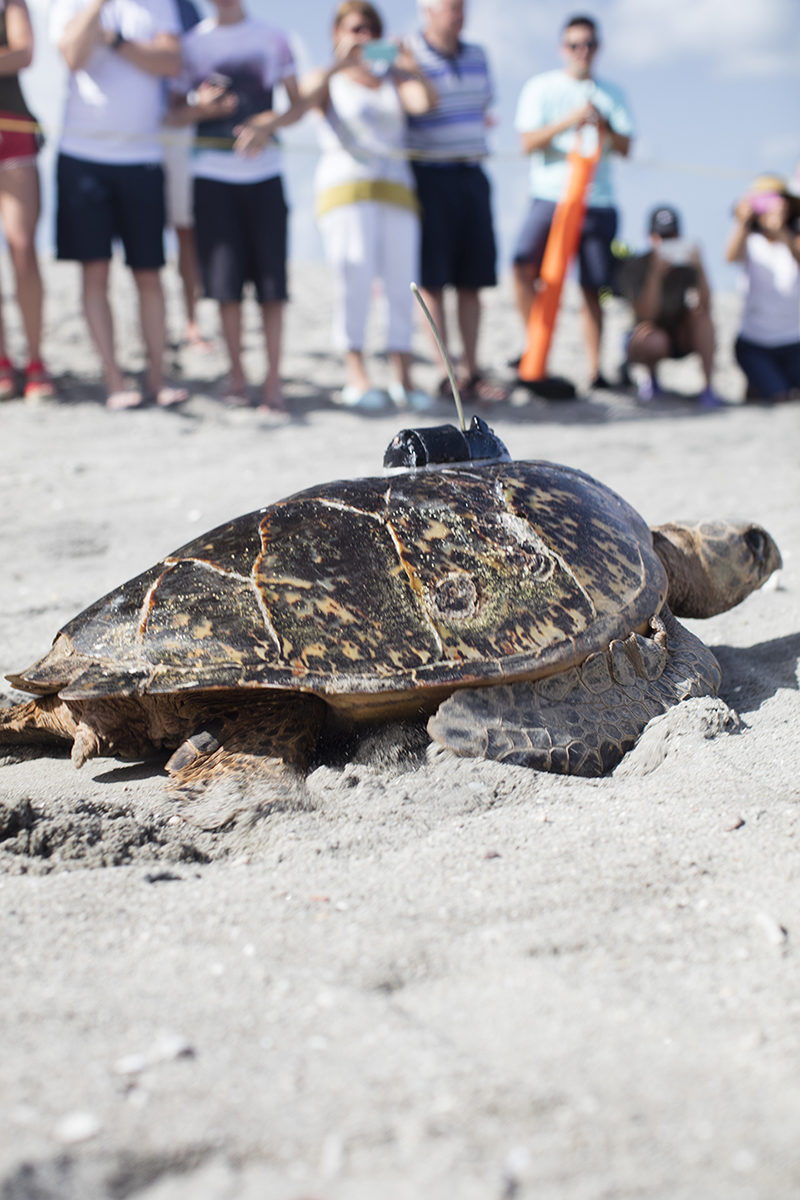
Mojito, a Hawksbill Sea Turtle, Photo Credit: The Naked Turtle Rum Company
For every bottle of Naked Turtle white rum that’s produced, the company donates 50 cents to the Sea Turtle Conservancy; $1 saves two endangered baby sea turtle hatchlings. That’s a significant number, since only one in 1,000 hatchlings survive into adulthood, according to the STC, the largest and oldest organization dedicated to the research and conservation of sea turtles. Since launching in 2012, Naked Turtle has partnered with the Gainesville, Florida-based nonprofit to save more than 234,000 sea turtles.
Yet bottle sales are just one way the liquor company is working with Four Seasons Nevis and the STC to help its namesake animal. Every year, the STC hosts the Tour de Turtles, with this past July marking the event’s 10th anniversary. Using satellite technology, the STC follows 20 turtles from their nesting sites across the Caribbean and Florida and tracks them in a race to complete a marathon. The turtle that swims the farthest in three months wins.
Of course, the tour is really a way to get people interested and engaged with the plight of the turtles. Researchers track the marine reptiles to study their migration patterns, discover the sorts of threats they face and figure out which countries have to be involved in any talks or agreements regarding the animals.
For the Nevis leg of the tour, the Four Seasons hosts it as part of its annual Sea Turtle Conservation Weekend. The hotel collaborates with the STC and the Nevis Turtle Group to plan programming around it. For example, the Sea Turtle Camp, complimentary for hotel guests, teaches children about the endangered animal through stories, games, crafts and more.
One of the big events of the weekend is the sea turtle night walk (turtles do their nesting in the evening). There was a large turnout for the 8 p.m. hotel meet-up. Dressed in black to blend in with the night, attendees were divvied up and driven to different Nevis beaches.
We were in luck: We were assigned to Lovers Beach, the site with the highest nesting density on the island (it sees about 110 nests per year, while most of the other beaches get around 50), which meant that our chances were good for finding a nest.
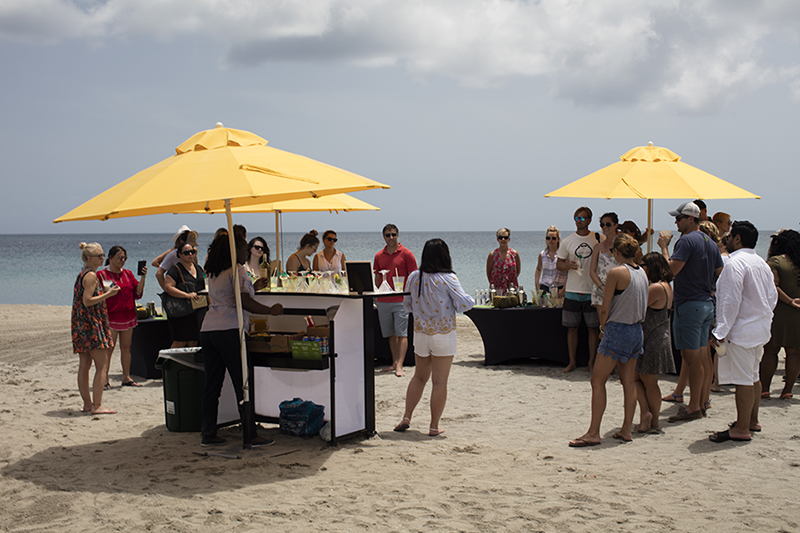
Toasting to Turtle Conservation, Photo Credit: The Naked Turtle Rum Company
At the beach, we were broken down into groups of about six, and took turns patrolling the sand with David Godfrey, executive director of the STC, who explained what kind of crawl marks to look for. It was difficult to see on the pitch-black beach, and we couldn’t use flashlights or smartphones, since those scare away the turtles. We had to search using a turtle-safe red light that Godfrey carried and the illumination of the abundant night stars.
After a couple of hours, we gave up the search, loaded the van and headed back to the hotel.
The following morning, we learned that a turtle was discovered on Lovers Beach shortly after we left around 11:40 p.m. However, patrollers had to wait for the momma turtle to finish nesting, hide her tracks to prevent poachers and ended up returning at 2:30 a.m.
Named Mojito, or Moji for short, she is at least 25 years old and under 200 pounds, which is smaller than average. Moji is a hawksbill, an endangered species that’s targeted by poachers for its beautiful tortoiseshell and its eggs — some people believe eating them ensures virility in men and fertility in women.
We went to a beach cabana to watch as STC’s Dan Evans, a research biologist, affixed the tracking device with fiberglass strips and resin onto the top of Moji’s shell — Evans assured us that the layers are so thin that it won’t harm the turtle. The transmitter eventually falls off, but it can stay on a turtle for two to three years. Evans walked onlookers through the process and answered turtle questions.
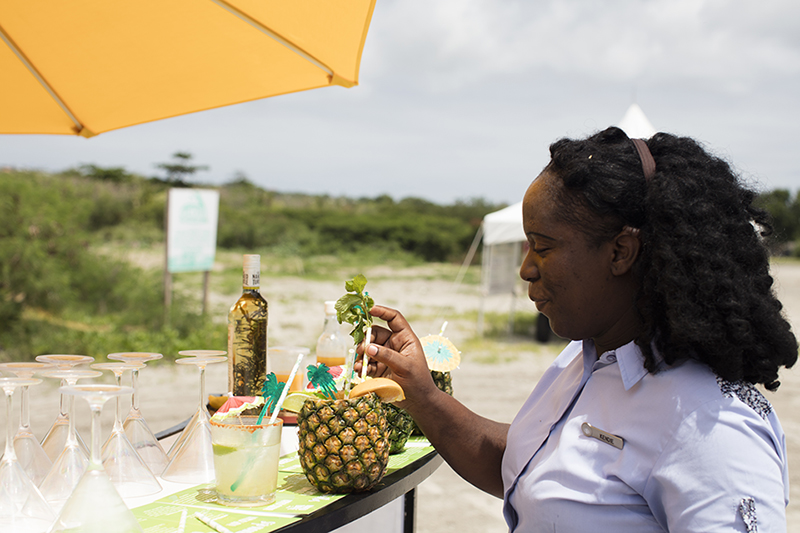
Master Mixologist Kendie Williams, Photo Credit: The Naked Turtle Rum Company
After the resin dried, the STC brought Moji to the hotel’s Pinney’s Beach for the big release. A large area was roped off for Moji to make her way back into the water. The crowds lined up on both sides cheering her on. Moji scrambled to return to the Caribbean Sea (watch a clip here), pausing a few times to catch her breath.
But that’s just the beginning of Moji’s journey. You can monitor her Tour de Turtles progress here. While she is in the back of the pack, she’s swam 361 miles and is lingering on Martinique as of the publishing of this story.
Even if Moji doesn’t wind up winning the “race,” the opportunity to aid such efforts is enough of a reward. We’d even drink a few more Spicy Island Turtles to help such a worthy cause.
